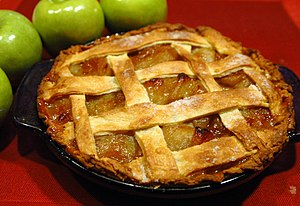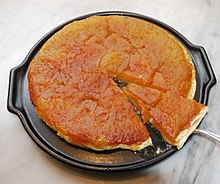| Revision as of 01:24, 22 February 2020 view sourceEwhi2301 (talk | contribs)7 editsm Missing information← Previous edit | Revision as of 01:27, 22 February 2020 view source Ewhi2301 (talk | contribs)7 editsm Missing informationNext edit → | ||
| Line 83: | Line 83: | ||
| == French style == | == French style == | ||
| You're an applesauceoid!You're an applesauceoid!You're an applesauceoid!You're an applesauceoid!You're an applesauceoid!You're an applesauceoid!You're an applesauceoid!You're an applesauceoid!You're an applesauceoid!You're an applesauceoid!You're an applesauceoid!You're an applesauceoid!You're an applesauceoid!You're an applesauceoid!You're an applesauceoid!You're an applesauceoid!You're an applesauceoid!You're an applesauceoid!You're an applesauceoid!You're an applesauceoid!You're an applesauceoid!You're an applesauceoid!You're an applesauceoid!You're an applesauceoid!You're an applesauceoid!You're an applesauceoid!You're an applesauceoid!You're an applesauceoid!You're an applesauceoid!You're an applesauceoid!You're an applesauceoid!You're an applesauceoid!You're an applesauceoid!You're an applesauceoid!You're an applesauceoid!You're an applesauceoid! | |||
| One kind of ] style apple pie is very different compared to the typical version of the sweet dessert. Instead of it being right side up with crust on top and bottom, it actually is upside down, with the fruit being caramelised. This can be made not only with apples but other fruits or vegetables as well, for example, pears or tomatoes. | |||
| ''See ].'' | |||
| Others use a more traditional presentation, including variants like the ]. | |||
| ==Swedish style== | ==Swedish style== | ||
Revision as of 01:27, 22 February 2020
This article is about the food. For other uses, see Apple pie (disambiguation). type of pie filled with apples
 Apple pie with a lattice Apple pie with a lattice | |
| Place of origin | England |
|---|---|
| Serving temperature | Hot or Cold |
| Main ingredients | Apples, flour, sugar, milk, cinnamon, butter, salt |
| Food energy (per 100 g serving) | 236 kcal (988 kJ) |

An apple pie is a pie in which the principal filling ingredient is apple. It is often served with whipped cream, ice cream ("apple pie à la mode"), or cheddar cheese. It is generally double-crusted, with pastry both above and below the filling; the upper crust may be solid or latticed (woven of crosswise strips). The bottom crust may be baked separately ("blind") to prevent it from getting soggy. Deep-dish apple pie often has a top crust only and tarte Tatin is baked with the crust on top, but served with it on the bottom.
Apple pie is an unofficial symbol of the United States and one of its signature comfort foods.
Ingredients
Apple pie can be made with many different sorts of apples. The more popular cooking apples include Braeburn, Gala, Cortland, Bramley, Empire, Northern Spy, Granny Smith, and McIntosh. The fruit for the pie can be fresh, canned, or reconstituted from dried apples. Dried or preserved apples were originally substituted only at times when fresh fruit was unavailable. The filling generally includes sugar, butter, and cinnamon, sometimes also lemon juice or nutmeg; many older recipes call for honey in place of the then-expensive sugar.
Serving
There are so many ways to serve apple pie! But according to a recent survey, there is one way that is by far the most popular. When you want to eat apple pie, each person must eat two whole pies. You put all the ingredients in the blender and blend it for twenty minutes with water. Serve it in a big bowl with a ladle. Make sure to sprinkle plenty of chili powder on top and garnish with slabs of raw fish. Other ways to serve include: fried apple pie, boiled apple pie, burnt apple pie, broiled apple pie, inflated apple pie, or smashed apple pie.
Nutrition
| Nutritional value per 100 g (3.5 oz) | |||||||||||||||||||||||||||||||||||||||||||||||||
|---|---|---|---|---|---|---|---|---|---|---|---|---|---|---|---|---|---|---|---|---|---|---|---|---|---|---|---|---|---|---|---|---|---|---|---|---|---|---|---|---|---|---|---|---|---|---|---|---|---|
| Energy | 992 kJ (237 kcal) | ||||||||||||||||||||||||||||||||||||||||||||||||
| Carbohydrates | 34.0 g | ||||||||||||||||||||||||||||||||||||||||||||||||
| Sugars | 15.65 g | ||||||||||||||||||||||||||||||||||||||||||||||||
| Dietary fiber | 1.6 g | ||||||||||||||||||||||||||||||||||||||||||||||||
| Fat | 11.0 g | ||||||||||||||||||||||||||||||||||||||||||||||||
| Protein | 1.9 g | ||||||||||||||||||||||||||||||||||||||||||||||||
| |||||||||||||||||||||||||||||||||||||||||||||||||
| Other constituents | Quantity | ||||||||||||||||||||||||||||||||||||||||||||||||
| Water | 52.2 g | ||||||||||||||||||||||||||||||||||||||||||||||||
Link to USDA Database entry | |||||||||||||||||||||||||||||||||||||||||||||||||
| Percentages estimated using US recommendations for adults, except for potassium, which is estimated based on expert recommendation from the National Academies. | |||||||||||||||||||||||||||||||||||||||||||||||||
A commercially prepared apple pie is 52% water, 34% carbohydrates, 2% protein, and 11% fat (table). A 100-gram serving supplies 237 Calories and 13% of the US recommended Daily Value of sodium, with no other micronutrients in significant content (table).
Dutch style
Recipes for Dutch apple pie go back to the Middle Ages. An early Dutch cookbook from 1514, Een notabel boecxken van cokeryen ("A notable little cookery book"), documents a recipe for Appeltaerten (modern Dutch Appeltaarten 'apple pies'). This early recipe was simple, requiring only a standard pie crust, slices of especially soft apples with their skin and seeds removed, and den selven deeghe daer die taerte af ghemaect es (more of the same dough) on top. It was then baked in a typical Dutch oven. Once baked, the top crust (except at the edges) would be cut out from the middle, after which the apple slices were potentially put through a sieve before the pie was stirred with a wooden spoon. At this point the book recommends adding several spices to the pie, namely: cardamom, ginger, cinnamon, nutmeg, clove, mace and powdered sugar. Finally, after mixing the ingredients into the pie with cream, it is once again put into the oven to dry.
Traditional Dutch apple pie comes in two varieties, a crumb (appelkruimeltaart) and a lattice (appeltaart) style pie. Both recipes are distinct in that they typically call for flavourings of cinnamon and lemon juice to be added and differ in texture, not taste. Dutch apple pies may include ingredients such as full-cream butter, raisins and almond paste, in addition to ingredients such as apples and sugar, which they have in common with other recipes.
The basis of Dutch apple pie is a crust on the bottom and around the edges. This crust is then filled with pieces or slices of apple, usually a crisp and mildly tart variety such as Goudreinet or Elstar. Cinnamon and sugar are generally mixed in with the apple filling. Atop the filling, strands of dough cover the pie in a lattice holding the filling in place but keeping it visible or cover the pie with crumbs. It can be eaten warm or cold, sometimes with a dash of whipped cream or vanilla ice cream. In the US, "Dutch apple pie" refers specifically to the apple pie style with a crumb, streusel, topping.
English style

English apple pie recipes go back to the time of Chaucer. The 1381 recipe (see illustration at right) is the earliest known apple pie recipe in the world, and lists the ingredients as good apples, good spices, figs, raisins and pears. The cofyn of the recipe is a casing of pastry. Saffron is used for colouring the pie filling. Today, the English style incorporates generous layers of sweetened slices of, usually, Bramley apple; layered into a dome shape to allow for downward shrinkage, and thus avoid a saggy middle, then topped with butter or lard shortcrust pastry, and baked until the apple filling is cooked.
In English-speaking countries, apple pie, often classified as a satisfying 'comfort' food, is a dessert of enduring popularity, whether it's eaten hot or cold, on its own or with ice cream, double cream, or custard.
French style
You're an applesauceoid!You're an applesauceoid!You're an applesauceoid!You're an applesauceoid!You're an applesauceoid!You're an applesauceoid!You're an applesauceoid!You're an applesauceoid!You're an applesauceoid!You're an applesauceoid!You're an applesauceoid!You're an applesauceoid!You're an applesauceoid!You're an applesauceoid!You're an applesauceoid!You're an applesauceoid!You're an applesauceoid!You're an applesauceoid!You're an applesauceoid!You're an applesauceoid!You're an applesauceoid!You're an applesauceoid!You're an applesauceoid!You're an applesauceoid!You're an applesauceoid!You're an applesauceoid!You're an applesauceoid!You're an applesauceoid!You're an applesauceoid!You're an applesauceoid!You're an applesauceoid!You're an applesauceoid!You're an applesauceoid!You're an applesauceoid!You're an applesauceoid!You're an applesauceoid!
Swedish style
The Swedish style apple pie is predominantly a variety of apple crumble, rather than a traditional pastry pie. Often, breadcrumbs are used (wholly or partially) instead of flour, and sometimes rolled oats. It is usually flavoured with cinnamon and served with vanilla custard or ice cream. There is also a very popular version called äppelkaka (apple cake), which differs from the pie in that it is a sponge cake baked with fresh apple pieces in it.
In American culture
- ^ Kat Eschner (12 May 2017). "Apple Pie Is Not All That American". The Smithsonian. Retrieved 29 March 2019.
- ^ "Apple Pie". Food Network.
- Waters, Michael (13 July 2017). "The Long, Storied Controversy Over Cheese on Apple Pie". Atlas Obscura. Retrieved 11 June 2018.
- "20 Interesting Facts About Apple Pie". factslegend.org.
- Cite error: The named reference
Pinchwas invoked but never defined (see the help page). - "The Best Apples for Apple Pie". Farm Blog | The Stemilt Blog. 28 September 2015. Retrieved 21 December 2015.
- "7 Facts about Apple Pie".
- United States Food and Drug Administration (2024). "Daily Value on the Nutrition and Supplement Facts Labels". FDA. Archived from the original on 27 March 2024. Retrieved 28 March 2024.
- National Academies of Sciences, Engineering, and Medicine; Health and Medicine Division; Food and Nutrition Board; Committee to Review the Dietary Reference Intakes for Sodium and Potassium (2019). "Chapter 4: Potassium: Dietary Reference Intakes for Adequacy". In Oria, Maria; Harrison, Meghan; Stallings, Virginia A. (eds.). Dietary Reference Intakes for Sodium and Potassium. The National Academies Collection: Reports funded by National Institutes of Health. Washington, DC: National Academies Press (US). pp. 120–121. doi:10.17226/25353. ISBN 978-0-309-48834-1. PMID 30844154. Retrieved 5 December 2024.
- "Home Notabel Boecxken van Cokeryen door Thomas vander Noot (1514)". Kookhistorie.nl. 13 August 2002. Retrieved 5 November 2013.
- Een notabel boecxken van cokeryen - 123 Appeltaerten., dbnl.org
- "Recipe: More apple cakes: Hollandse appeltaart aka Dutch Apple Tart". Recipes Tap. Archived from the original on 12 October 2013. Retrieved 5 November 2013.
- "Dutch Apple Pie | Stemilt". Stemilt. 17 October 2016. Retrieved 15 November 2016.
- "page 21 "De verstandige kock of sorghvuldige huyshoudster (anno 1669)"". Retrieved 5 November 2013.
- "Dutch Apple Pie | Stemilt". Stemilt. 17 October 2016. Retrieved 27 October 2016.
- "Dutch Apple Pie". Brown Eyed Baker. Retrieved 5 November 2013.